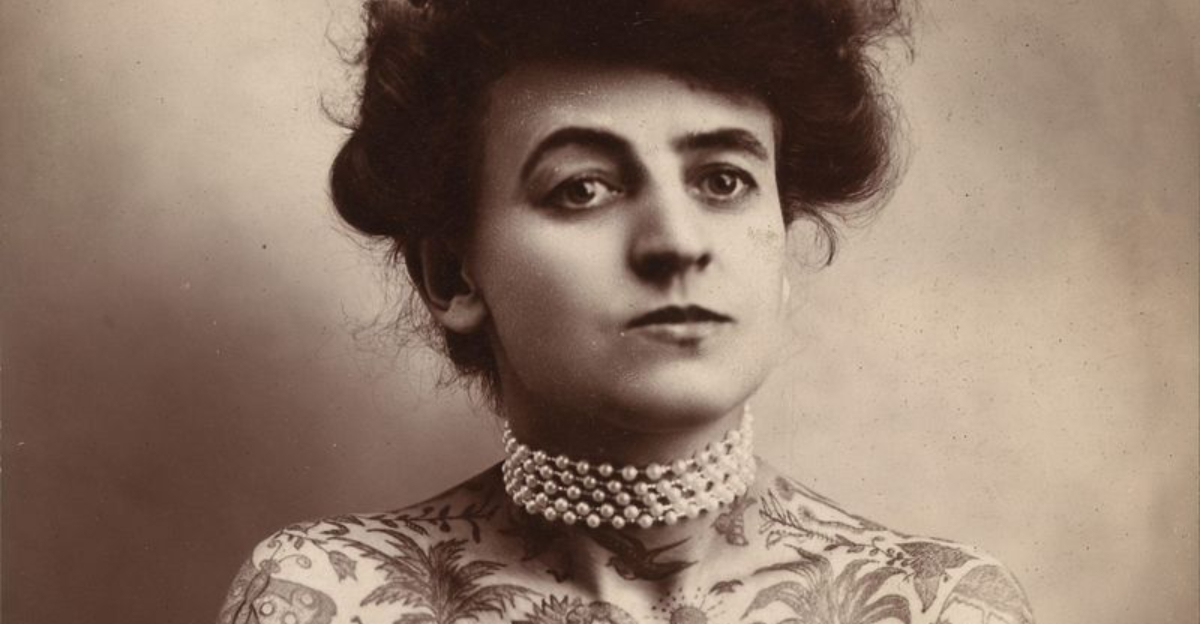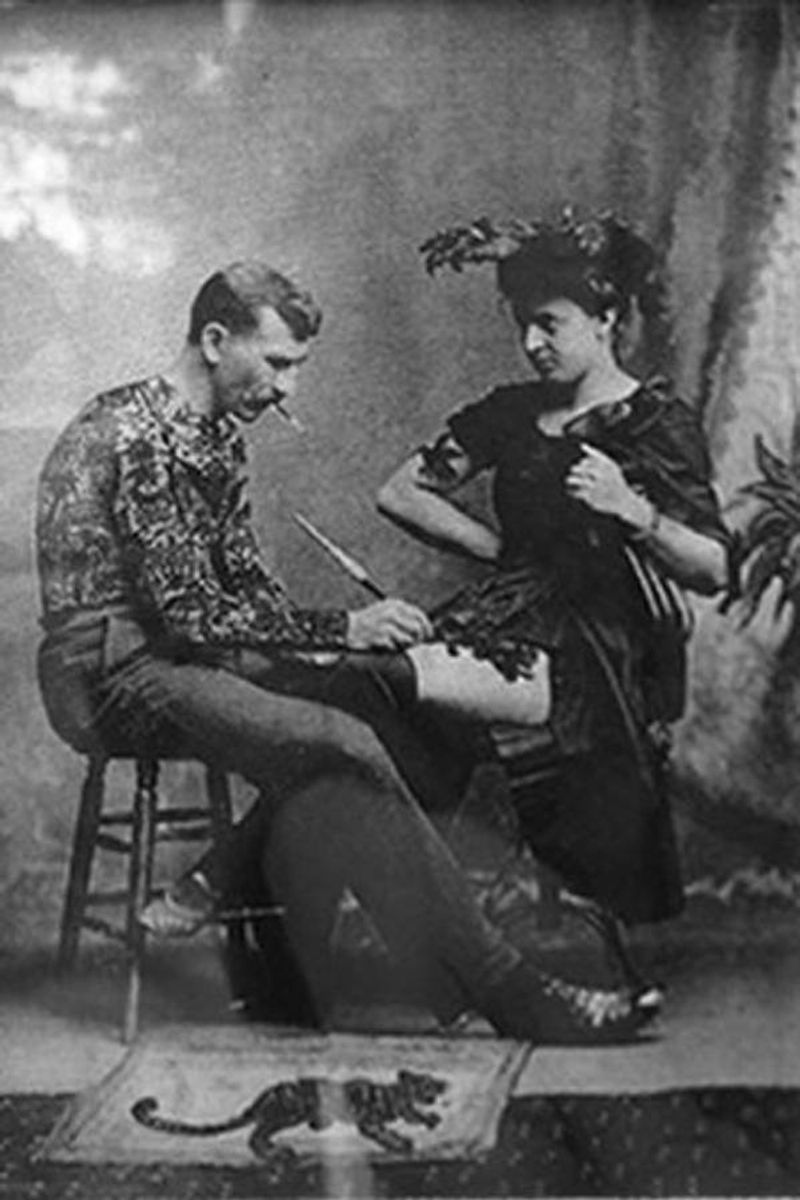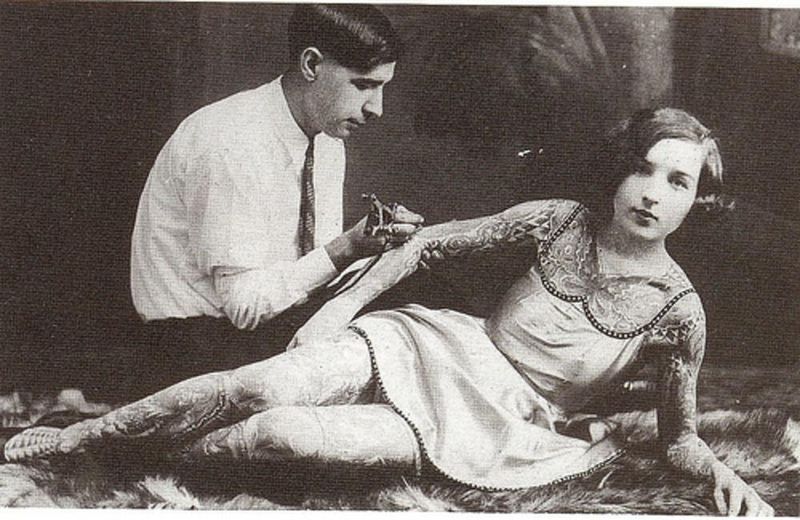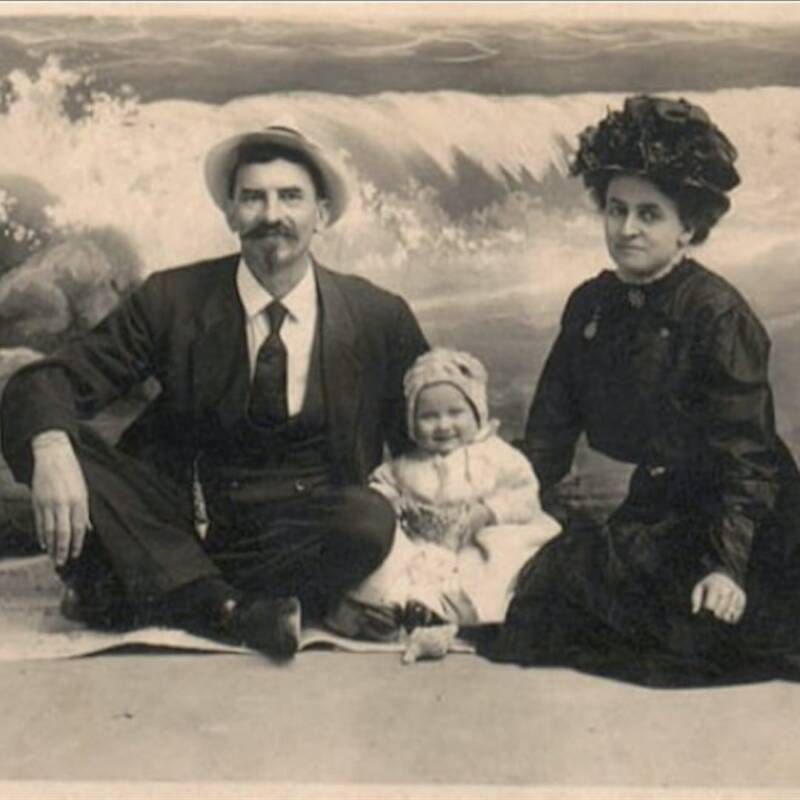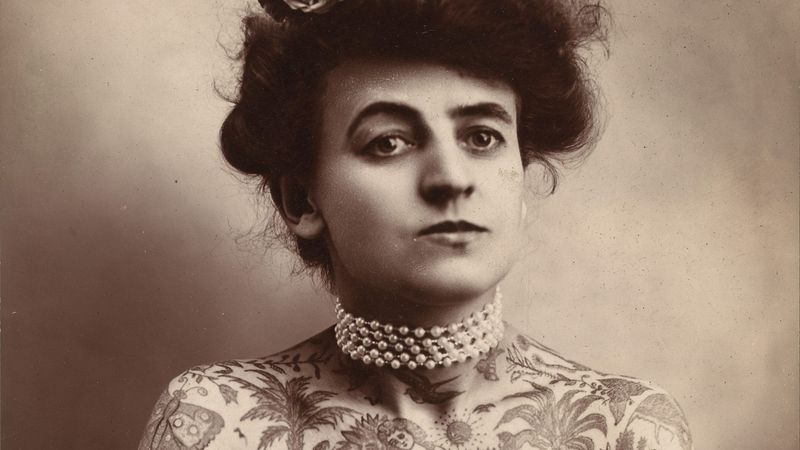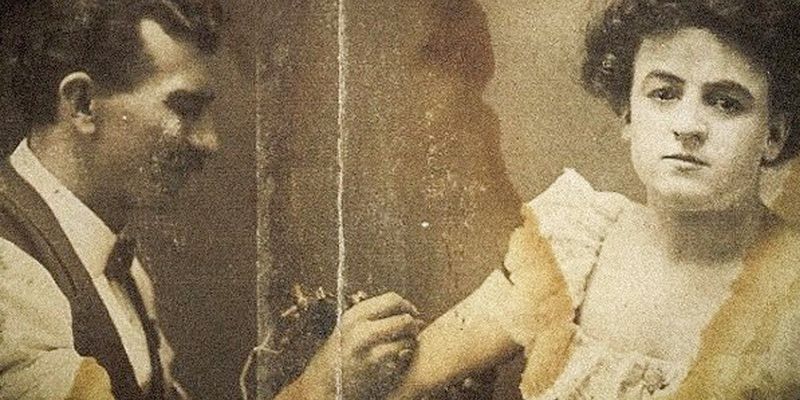Long before tattoos became trendy and mainstream, Maud Wagner stunned conservative America with ink that told a story. As the first known female tattoo artist in the U.S., she wasn’t just decorated — she was revolutionary. Here’s how this fearless woman reshaped history, one tattoo at a time.
1. She Was America’s First Female Tattoo Artist
Maud Wagner was a trailblazer in a world dominated by men. In 1904, she became the first known female tattoo artist in the United States. Defying societal norms, she took the bold step into the tattoo industry, which was heavily male-oriented. Her technique was as unique as her presence, relying on the traditional hand-poked method rather than modern machines. This dedication to the craft and her pioneering spirit paved the way for countless women in the tattoo community. Her story is a testament to courage and breaking barriers in an era when women were restricted to certain roles.
2. Her Entire Body Was a Living Canvas
Imagine a time when women didn’t even show their ankles. Maud Wagner, however, displayed her tattoos proudly, transforming her body into a living canvas. Every inch from her neck to her ankles was adorned with art, making powerful statements without uttering a single word. Her courage and boldness displayed a defiance of conventional norms and demonstrated that a woman’s body could be both a canvas and a masterpiece. This visual rebellion struck a chord in a conservative society, influencing perceptions of tattoos, art, and femininity in profound ways.
3. She Rejected the Tattoo Machine
While the tattoo industry leaned towards mechanization, Maud Wagner rebelled against the tide. She chose to cling to the traditional stick-and-poke technique. This choice wasn’t merely a preference but a statement. It highlighted her commitment to preserving the essence of tattooing as an art form, honoring its roots and traditions. Her adherence to this method showcased her respect for the craft and a dedication to authenticity. Maud’s insistence on tradition, even in the face of modernization, set her apart and preserved the art’s heritage for future generations.
4. She Learned from a Legend — and Married Him
Fate brought Maud and Gus Wagner together under the vibrant tents of a circus. Gus, already a renowned tattooist, saw potential in Maud’s spirit and offered to teach her the craft. But Maud had a condition: she would only accept if he married her. Their union was more than just romantic; it was a merging of talents, love, and passion for tattoos. Together, they traveled, performed, and tattooed, creating a legacy that transcended their personal lives. Their partnership not only sparked a revolution in tattoo artistry but also in how couples collaborated creatively.
5. She Took Tattooing on the Road
Traveling the United States, Maud Wagner introduced tattoos to the mainstream through carnivals and sideshows. With her husband Gus, she brought tattoo art to the masses, turning it into a spectacle and a form of personal expression. At a time when tattoos were mostly associated with sailors and outlaws, Maud transformed them into a celebrated art form. Her performances captivated audiences everywhere, challenging preconceived notions and inviting people to view tattoos in a new light. This nomadic lifestyle helped normalize tattoos, showcasing them as an accessible and respected art medium.
6. She Helped Normalize Tattoos for Women
In an era when tattoos were a mark of sailors and rebels, Maud Wagner boldly showcased hers as a badge of honor. Her visible tattoos, worn with pride, were revolutionary, challenging societal norms about what was acceptable for women. By embracing body art, she opened doors for other women to explore tattoos without fear or shame. Maud’s influence extended beyond just the art form; it changed perceptions, enabling women to express themselves freely and creatively. Her legacy is seen in every woman today who chooses to adorn her body with ink, celebrating both individuality and empowerment.
7. She Trained Her Daughter in the Craft
Passing on a legacy is a powerful thing. Maud Wagner did just that by training her daughter, Lotteva, in the art of tattooing. This decision was more than keeping it in the family; it ensured the continuity of women’s involvement in tattoo artistry. By nurturing Lotteva’s skills, Maud safeguarded the tradition and empowered future generations. This nurturing relationship highlighted the importance of women supporting each other in a male-dominated field. Lotteva’s career further cemented the Wagner legacy, showcasing that talent and passion know no gender boundaries.
8. She Proved Women Could Be Both Artists and Performers
In the mesmerizing world of sideshows, Maud Wagner embodied dual roles. As a tattooed lady, she intrigued audiences with her inked body. But beyond the spectacle, she was a skilled tattoo artist, proving that women could excel as both performers and creators. This dual identity defied societal expectations, challenging ideas about women’s capabilities. Maud’s performances brought her art to life, blending visual artistry with theatrical flair. Her impact went beyond tattoos, reshaping how women were viewed in artistic and entertainment circles, demonstrating that talent and creativity are not limited by gender.
9. Her Tattoos Were Pure Americana
Maud Wagner’s tattoos were more than mere decoration; they were stories etched in skin. With themes of Americana, her body featured eagles, lions, and mythical figures, reflecting early 20th-century values and symbolism. Each design was a nod to patriotism and mythology, resonating with the cultural sentiments of her time. These tattoos became her identity, narrating tales of courage, freedom, and imagination. Maud’s art was a living scrapbook, chronicling her life and beliefs, bridging the gap between traditional American values and personal expression, and leaving an indelible mark on the cultural landscape.
10. She Became a Countercultural Icon
Maud Wagner’s lifestyle inadvertently turned her into a symbol of rebellion and independence. Her choice to embrace tattoos was a form of silent protest against restrictive societal norms. She became an icon for future generations seeking to break free from conventional expectations. Although Maud didn’t set out to become a countercultural figure, her life’s work inspired artists, rebels, and feminists who saw in her a kindred spirit. Her bold choices and unique style served as a beacon, encouraging others to live authentically and challenge the status quo.
11. Her Legacy Lives in Every Tattoo Shop Today
Walk into any tattoo shop today, and you’ll find traces of Maud Wagner’s influence. As a pioneer, she laid the groundwork for future generations, ensuring that women could thrive in what was once an exclusive space. Her commitment to the art form and her trailblazing spirit resonate in every needle, ink, and design. Modern female tattoo artists often cite Maud as an inspiration, a figure who proved that talent knows no gender. Her legacy is a reminder of the courage required to break barriers and the enduring power of art to transform society.
